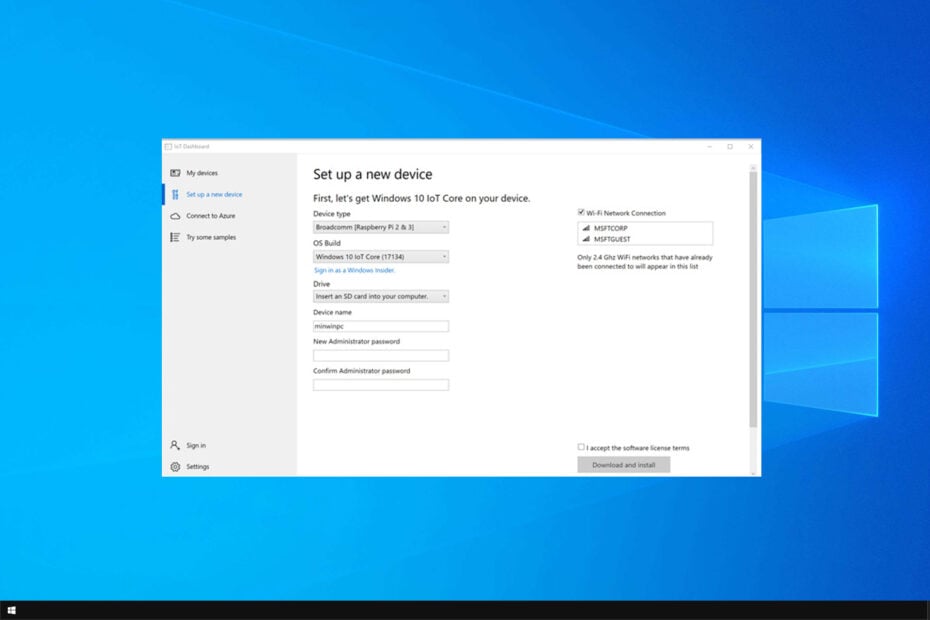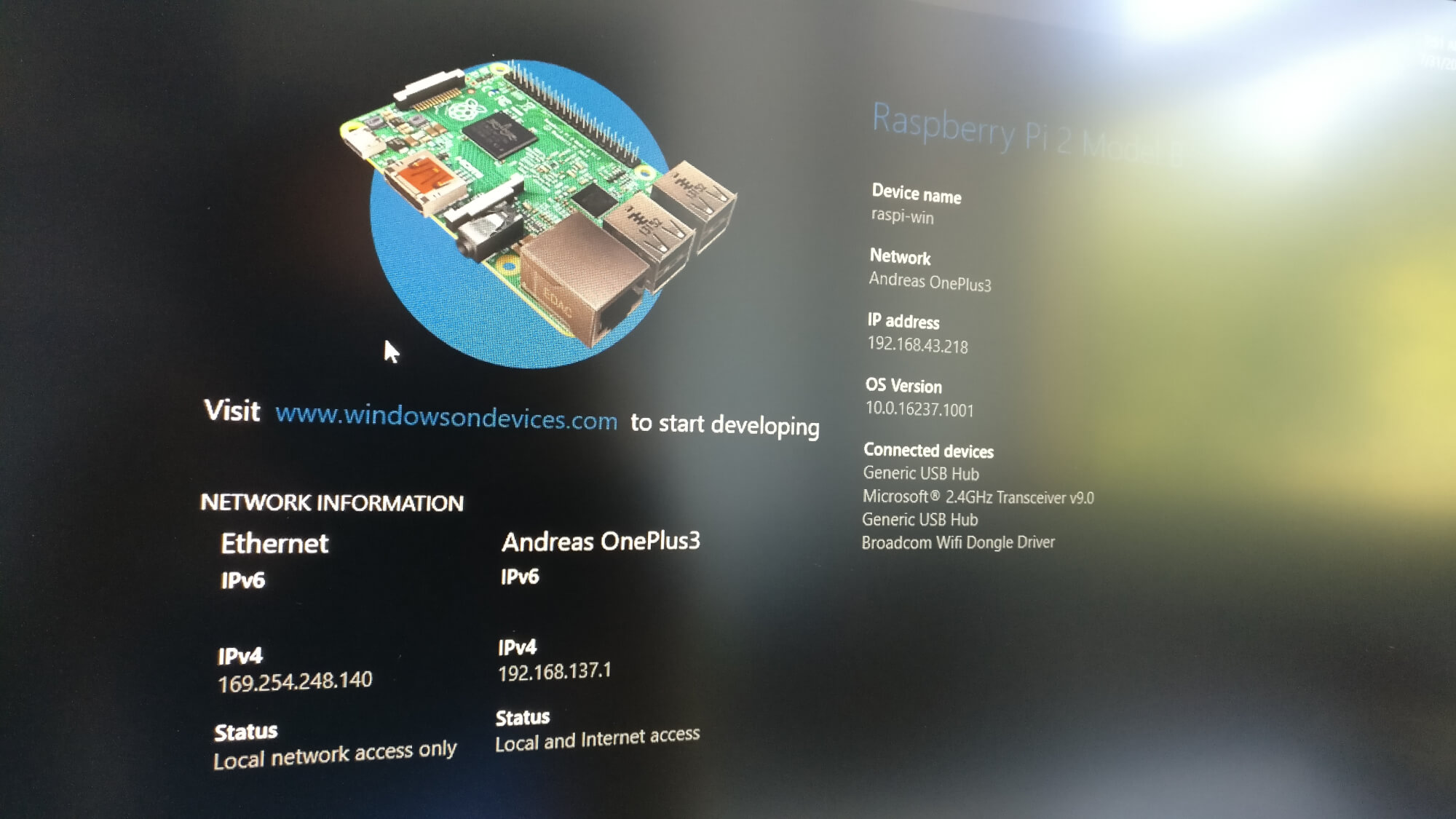How Do I SSH Into An IoT Device On Windows 10? A Simple Guide For Everyone
Are you ready to dive into the world of IoT and Windows 10? SSH into an IoT device on Windows 10 is not as scary as it sounds. Whether you're a tech enthusiast or just someone curious about how devices talk to each other, this guide’s got you covered. We’re breaking down the process into bite-sized steps that anyone can follow. So, buckle up, and let’s get started!
Imagine this: you’ve got an IoT device sitting in your room, and you want to access it remotely from your Windows 10 PC. Sounds futuristic, right? Well, it’s not as complicated as it seems. With SSH (Secure Shell), you can securely connect to your IoT device and start managing it like a pro. This article will walk you through everything you need to know about SSH and IoT on Windows 10.
Before we jump into the nitty-gritty, let’s address the elephant in the room—why should you care about SSH? In today’s connected world, being able to access and manage devices remotely is a game-changer. Whether you’re monitoring a smart thermostat, controlling a security camera, or managing a home automation system, SSH gives you the power to do all that and more. Stick around, and we’ll make sure you’re a pro by the end of this.
Read also:Real Carly Jane The Ultimate Guide To Her Life Career And Influence
What is SSH and Why Should You Care?
SSH stands for Secure Shell, and it’s basically a protocol that lets you securely connect to remote devices. Think of it as a secret tunnel that allows you to communicate with your IoT device without anyone eavesdropping. It’s super important because it encrypts all the data that flows between your computer and the IoT device, keeping everything safe and sound.
Here’s the deal: SSH isn’t just for tech wizards anymore. With Windows 10 making it easier than ever to use SSH, even beginners can get in on the action. Whether you’re troubleshooting a device, running commands, or transferring files, SSH is your best friend in the world of IoT.
Why is SSH Important for IoT Devices?
IoT devices are everywhere these days, from smart fridges to voice assistants. But here’s the catch—they need to be managed and monitored. SSH gives you that control without compromising security. Here are a few reasons why SSH is a must-have for IoT:
- It’s secure and encrypted, so no one can intercept your data.
- You can manage devices remotely, saving you time and effort.
- It works across different platforms, so you’re not limited to just one device type.
- It’s widely supported, meaning most IoT devices already have SSH built-in.
So, whether you’re a hobbyist tinkering with Raspberry Pi or a professional managing a network of IoT devices, SSH is your go-to tool.
How Do I SSH Into an IoT Device on Windows 10?
Alright, let’s get down to business. SSH-ing into an IoT device on Windows 10 is a straightforward process, and we’ll break it down step by step. First things first, make sure your IoT device is up and running and connected to the same network as your Windows 10 PC. Got that? Great! Now, let’s move on to the next steps.
Step 1: Enable SSH on Your IoT Device
Before you can SSH into your IoT device, you need to make sure SSH is enabled on it. This process varies depending on the device, but here’s a general guide:
Read also:Ashley Hesseltine Net Worth The Untold Story Of Success And Influence
- Log in to your IoT device’s admin panel or terminal.
- Look for an option labeled “SSH” or “Remote Access.”
- Enable SSH and note down the IP address of the device.
Most IoT devices will have SSH enabled by default, but if not, this step is crucial. Don’t skip it!
Step 2: Install an SSH Client on Windows 10
Windows 10 comes with an SSH client built-in, but you need to enable it first. Here’s how:
- Go to Settings > Apps > Optional Features.
- Click on “Add a feature” and search for “OpenSSH Client.”
- Select it and click “Install.”
Once installed, you’re good to go. No need for third-party tools unless you want extra features.
Step 3: Open Command Prompt or PowerShell
Now that you’ve got the SSH client installed, it’s time to open up Command Prompt or PowerShell. Here’s how:
- Press the Windows key and type “Command Prompt” or “PowerShell.”
- Select the app you prefer.
Both tools work the same for SSH, so it’s up to you which one to use.
Step 4: Connect to Your IoT Device
This is the moment of truth. To connect to your IoT device, type the following command in the Command Prompt or PowerShell:
ssh username@ip_address
Replace “username” with the username of your IoT device and “ip_address” with the actual IP address. Hit Enter, and you’ll be prompted to enter a password. Once you do, you’ll be connected!
Troubleshooting Common SSH Issues
Let’s face it—things don’t always go as planned. If you’re having trouble SSH-ing into your IoT device, here are a few common issues and how to fix them:
Issue 1: Connection Refused
If you’re getting a “connection refused” error, it usually means SSH isn’t enabled on the IoT device. Double-check the settings and make sure SSH is turned on. Also, verify the IP address—you might have entered the wrong one.
Issue 2: Permission Denied
Getting a “permission denied” error? This usually happens when the username or password is incorrect. Double-check your credentials and try again. If the problem persists, make sure the user account has SSH access enabled.
Issue 3: Network Problems
Make sure both your Windows 10 PC and IoT device are connected to the same network. If they’re on different networks, SSH won’t work. You might need to use a router or a VPN to bridge the gap.
Advanced Tips for SSH on Windows 10
Once you’ve got the basics down, you can start exploring some advanced features of SSH. Here are a few tips to take your skills to the next level:
Tip 1: Use SSH Keys for Passwordless Login
Tired of typing in your password every time? SSH keys are the solution. Here’s how to set them up:
- Generate a key pair using the command: ssh-keygen
- Copy the public key to your IoT device using: ssh-copy-id username@ip_address
- Test the connection without entering a password.
SSH keys not only save time but also add an extra layer of security.
Tip 2: Use SSH Tunneling for Secure Connections
If you’re accessing your IoT device over the internet, SSH tunneling is a must. It encrypts all your data and keeps prying eyes away. Here’s how:
ssh -L local_port:destination:destination_port username@ip_address
This creates a secure tunnel between your PC and the IoT device, perfect for sensitive operations.
Why Is SSH Secure for IoT Devices?
Security is a big deal when it comes to IoT devices, and SSH is one of the most secure ways to manage them. Here’s why:
- It uses encryption to protect your data from eavesdropping.
- It authenticates users, ensuring only authorized people can access the device.
- It’s widely trusted and used by professionals across the globe.
With SSH, you can rest assured that your IoT device is safe from hackers and other threats.
Best Practices for SSH on IoT Devices
While SSH is secure, there are still a few best practices you should follow to keep your IoT devices safe:
- Use strong passwords or SSH keys for authentication.
- Limit SSH access to trusted IP addresses only.
- Regularly update your IoT device’s firmware to fix security vulnerabilities.
Following these practices will ensure your IoT devices remain secure and reliable.
Conclusion
So, there you have it—everything you need to know about SSH-ing into an IoT device on Windows 10. From enabling SSH on your device to troubleshooting common issues, we’ve covered it all. Remember, SSH isn’t just a tool—it’s a powerful way to manage and secure your IoT devices.
Now, it’s your turn. Try connecting to your IoT device and see how easy it is. If you’ve got any questions or run into issues, drop a comment below, and we’ll be happy to help. And don’t forget to share this article with your friends who might find it useful. Happy SSH-ing!
Table of Contents
- What is SSH and Why Should You Care?
- Why is SSH Important for IoT Devices?
- How Do I SSH Into an IoT Device on Windows 10?
- Step 1: Enable SSH on Your IoT Device
- Step 2: Install an SSH Client on Windows 10
- Step 3: Open Command Prompt or PowerShell
- Step 4: Connect to Your IoT Device
- Troubleshooting Common SSH Issues
- Advanced Tips for SSH on Windows 10
- Why Is SSH Secure for IoT Devices?
- Best Practices for SSH on IoT Devices


